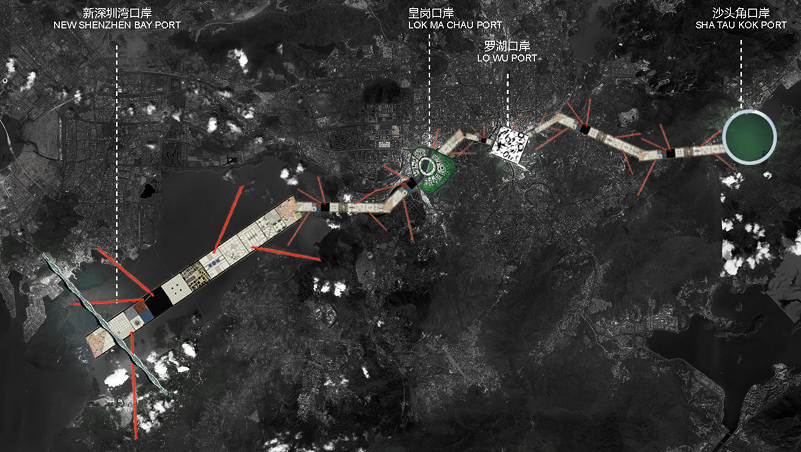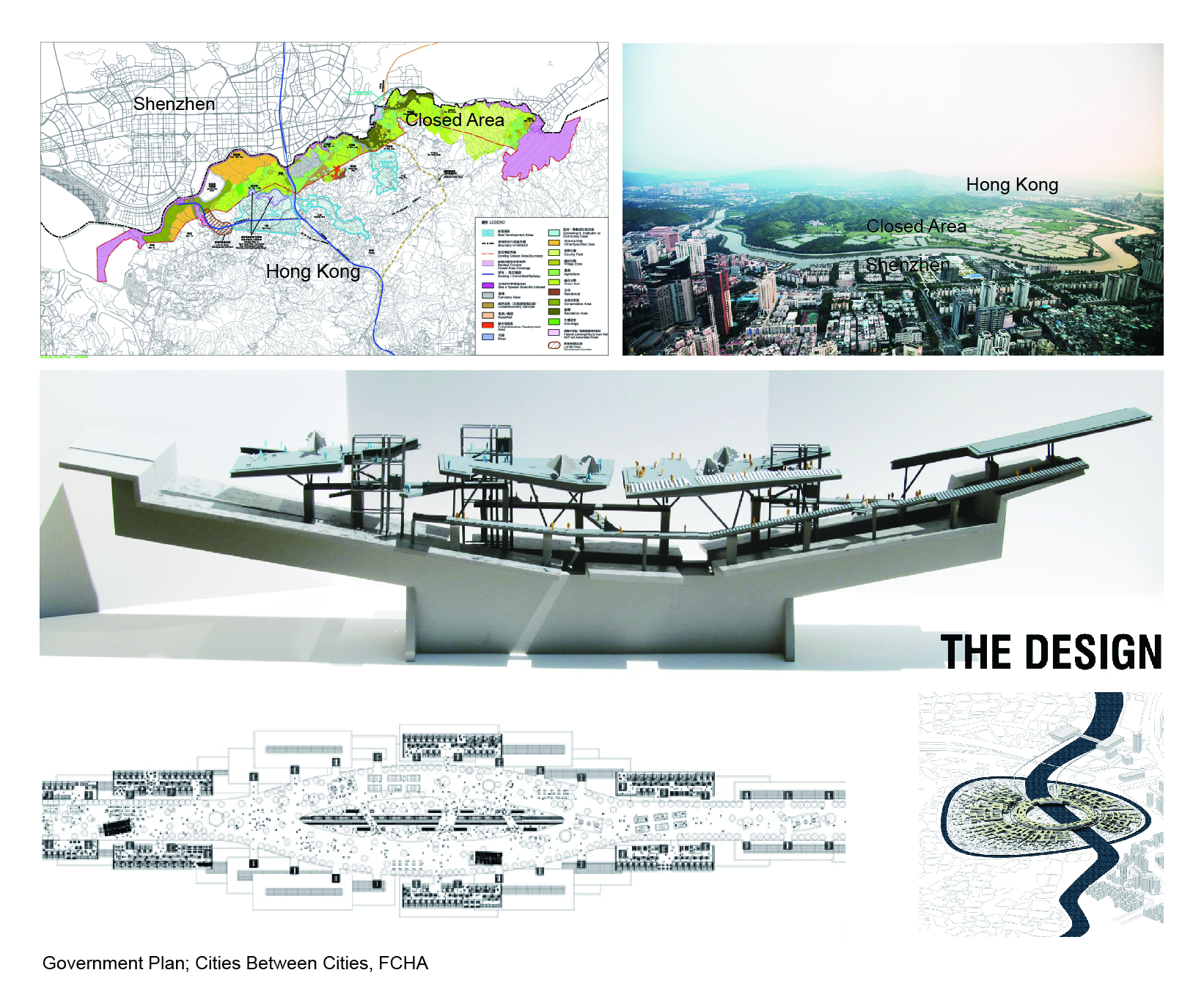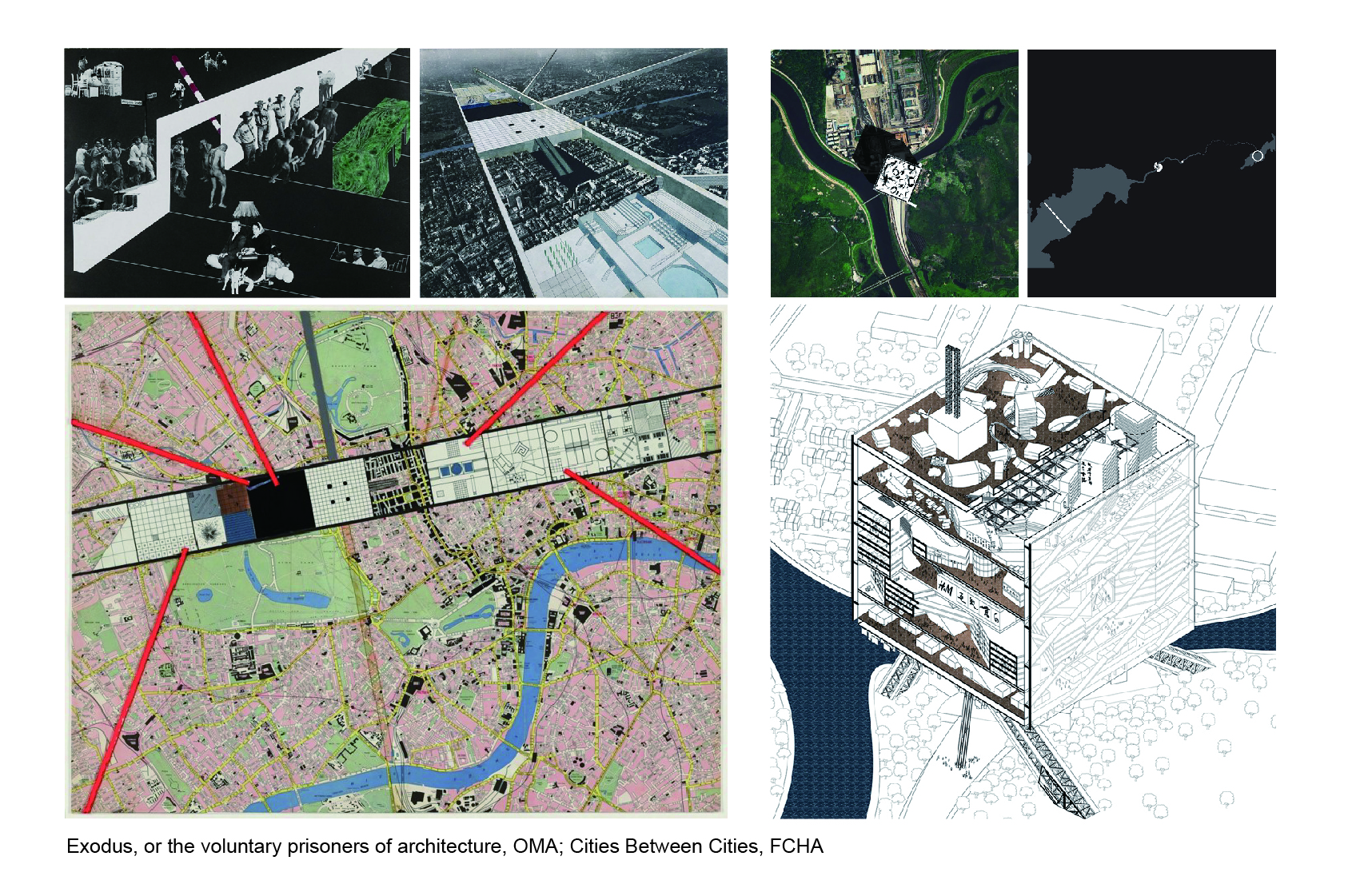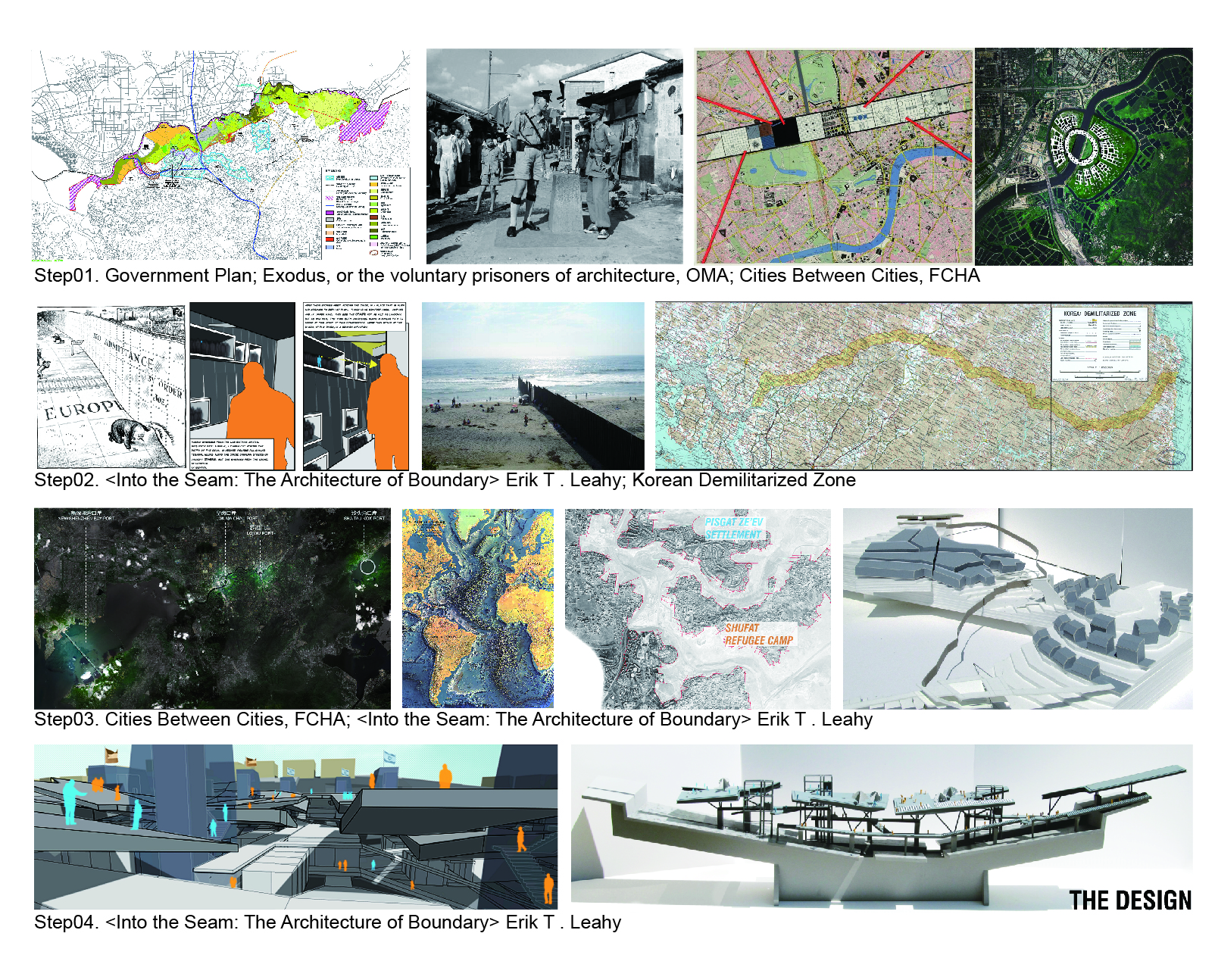|
Paradoxical Boundary
Artifact

The methodology of this thesis is mapping. My thesis focuses on the boundary of different regions and take the Hong Kong & Shenzhen as an example. It is concerned with the paradoxical situation of confrontation and cooperation based on the politic, society, economy and architecture. With proper study, plan and design, my thesis aims to rethink the boundary with frontier closed area and propose the new “paradoxical boundary” with ambiguity in some aspects as well as distinctness in other aspects.
WHAT?

The site is located at the frontier closed area between Hong Kong & Shenzhen. The background contains the condition of boundary with frontier closed area and the situation between two cities. I will research on the economy, history, urban planning of Shenzhen and Hong Kong and propose integrated system with different scales. The research and design scale comprises region, urban and architecture. And the thesis will also deal with the issues of politic, economy, society, architecture.
Paradoxical :
The relationship between Shenzhen and Hong Kong is not only about two cities, but also about Mainland and Hong Kong. The two parts have many distinctions leading to confrontation as well as demanding communication. This kind of paradoxical condition offers a perfect background for the design research on the boundary.
Distinctions:
Politic: Powerful Government (CPC) & Powerful People (Hong Kong)
Economic systems: socialism (Shenzhen) & capitalism (Hong Kong).
Culture: Eastern (Shenzhen) & Partial Western Influence (Hong Kong)
Development: Urban Central (Shenzhen) & Countryside(Hong Kong closed area)
Society: Mainland Residents (Shenzhen) & Hong Kong locals (Hong Kong)
Internet: Half-Open (Shenzhen) & Open (Hong Kong)
Income: Low (Shenzhen) & High (Hong Kong)
WHY?

Exodus, or the voluntary prisoners of architecture – OMA – 1972
This project put forward the critical vision that the Architecture can also be a suppression of freedom and democracy. “Once, a city was divided in two parts. One part became the Good Half, the other part the Bad Half. After all attempts to interrupt the undesirable migration from bad to good had failed, the authorities of the bad part made desperate and savage use of architecture: they built a wall around the good part of the city, making it completely inaccessible to their subjects. The Wall was a masterpiece. It is an intervention designed to create a new urban culture invigorated by architectural innovation and political subversion.”
Cities Between Cities – FCHA – 2013
This project designed by FHCA think the cooperation is the future of Shenzhen and Hong Kong. They propose the Utopia vision that some certain micro-cities in the check point between cities will combine the two cities and solve the problems. These micro-cities are designed for dealing with different issues such as living, education, trading and caring.
Koolhaas’s project alludes to Cold War and Berlin Wall. It is the the critical vision of barriers about architectural innovation and political subversion. And the FCHA’s project is about an utopia vision that only focuses on the cooperation and integration.
I think the boundary in such complex modern cities is in a paradoxical situation. The boundary also should be paradoxical balancing the isolation and dialogue.
HOW?

The thesis starts from Hong Kong & Shenzhen boundary and expand to the paradoxical situation in the world. Finally, the design site will be back to Hong Kong & Shenzhen boundary again. I will research on the economy, history, urban plan of Shenzhen and Hong Kong and propose integrated system with different scales. The research and design scale comprises region, urban and architecture. And the thesis will also deal with the issues of politic, economy, society and architecture.
Step01: Research on the economy, history, urban planning of Shenzhen and Hong Kong. Case study of the projects and sites.
Step02: Analysis of the current barrier systems and do the design tests: Korean Demilitarized Zone (Conflicts); US-Mexico Fence (Geography); Northern Ireland Peace Walls (Historical problem).
Step03: At this stage I will propose the integrated system with different scales including region, urban and architecture. In different scales there are different proposals and designs.
Step04: Specific architectural design in a integrated paradoxical boundary system.
BIBLIOGRAPHY
1. Koolhaas, Rem. Delirious New York: A Retroactive Manifesto for Manhattan. New York: Monacelli Press, 1994. Print.
2. Hirst, Paul Q. Space and Power: Politics, War, and Architecture. Cambridge: Polity, 2005. Print.
3.Jackowski, Nannette., and Ricardo de Ostos. Ambiguous Spaces: NaJa & DeOstos. New York: Princeton Architectural Press, 2008.
4. OMA. Exodus, or the voluntary prisoners of architecture. 1972.
5. FHCA. Cities between Cities. 2013.
|



